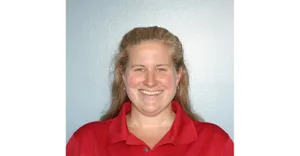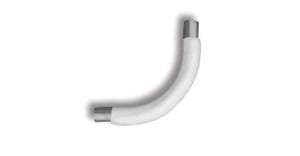Discussing the more common issues associated with material flushing
July 26, 2022
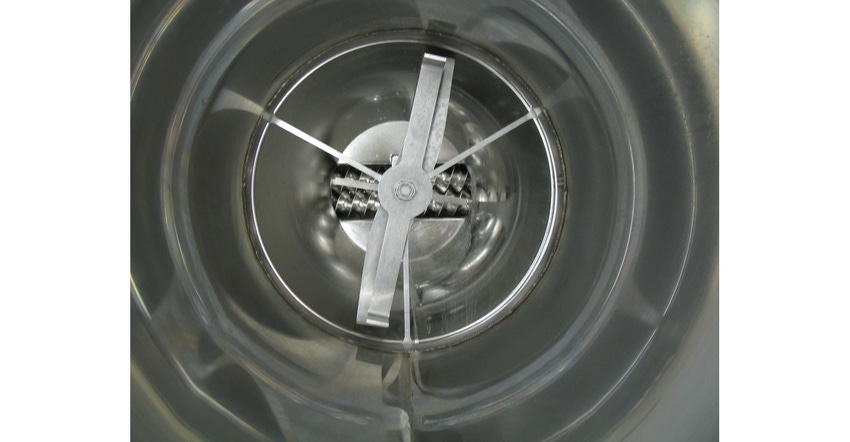
Todd D. Messmer, Schenck Process
From time to time we get comments from customers that their material is flushing out of their feeders. There are several things that can be contributing to or causing this. In this article we will look at some of the more common issues associated with material flushing.
The place we need to start our investigation is with the material itself. Is the material aeratable and once aerated does it fluidize like a liquid? A good place to evaluate this is to measure the material’s angle of repose. Picture a pile of the material sitting on a flat surface. The angle measured between the flat surface and the pile made by the material is called the angle of repose. Higher angles of repose equate to a material that is very cohesive and sticks to itself. Lower angles of repose equate to a material that is very free flowing and could potentially be floodable. The low angle of repose floodable materials are more prone to flushing out of a feeder than those with higher angle of repose.
Ratholing
High angle of repose materials also have the potential to flood out of a feeder. There are two scenarios where high angle of repose materials can flood. The first scenario is known as ratholing (see Figure 1).
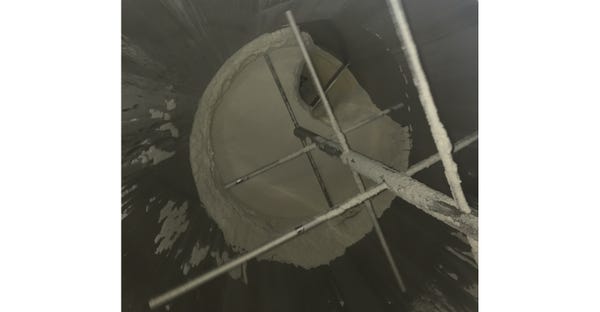
Ratholing occurs when material starts forming a small void as it is being fed out. The material around this void can then collapse in on itself and cause a flushing issue. There is also the material bridge scenario. Like the rathole phenomenon a material bridge occurs when a void (in this case a bridge) is created over the feed screw. When this bridge collapses, material can come flushing out of the feeder. In either of these scenarios a feeder with internal agitation may be needed to keep material from ratholing or bridging (see Figure 2).
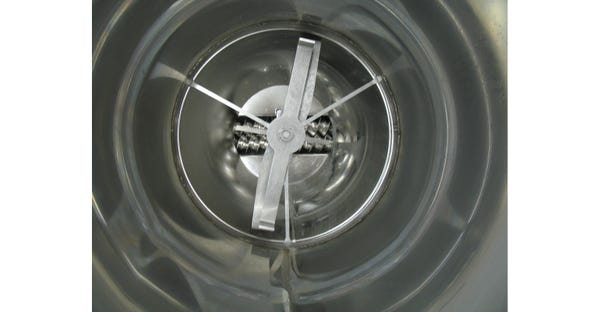
Refill Setpoints
This leads us toward our next place to look: refill setpoints. With floodable type materials we need to make sure that a heal or head of material is kept on top of the feed screw. When the feeder calls for a refill, the incoming material will aerate the material inside of the feeder. If there is not enough material over the feed screw to deaden this aeration out, we can aerate the existing material inside of the feeder to the point that it will fluidize and flush out of the feeder. This is a full stop scenario where the entire line must be paused so the feeder can be properly refilled again. What is recommended then is to raise the lower set point up to a point where there is a nice heal of material over the feed screw to protect it from the charge of material coming in and fluidizing the material inside of the feeder. In other words, you are going to have to do more frequent smaller refills with a low angle of repose floodable material.
Refill System
The next place to look is with the refill system itself. Is the refill system a typical gravity-type system consisting of a bin with a refill valve on the bottom of it? Does the material have a long distance to drop before it enters the feeder? A charge of material dropping from a long distance can cause the material inside of a feeder to aerate and flush out. If this is the case, is it possible to move the refill valve (butterfly valve or slide gate valve) closer to the feeder so that the material does not have as far to fall and cause havoc with aerating the material inside of the feeder? If not, you may need to install a baffle inside of the feeder’s extension hopper. The baffle can be a piece of angle iron positioned so the point of the angle iron is pointed up toward the inlet of the feeder’s extension hopper or a conical piece of material supported inside of the feeder to again baffle the impact of the material coming into the feeder. Installing baffles can be very tricky as they can also introduce a point for the material to start hanging up on and eventually become blocked.
Is the refill system a pneumatic or vacuum type system? Are we giving the material enough time to de-aerate after being picked up and conveyed? Refilling a feeder with a material that has been aerated while moving it from point A to point B can also flush out of a feeder. Here again, a larger refill bin above the feeder may be needed to allow the material enough time to de-aerate before it is introduced into the feeder via a refill (see Figure 3).
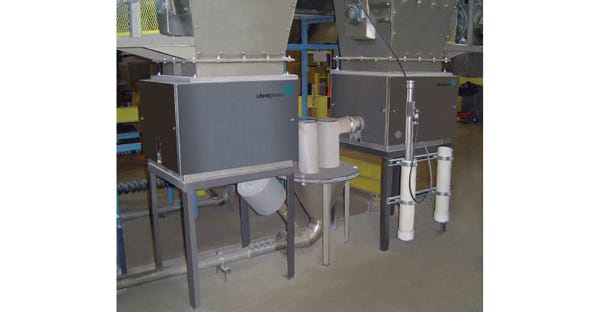
Is the material only flushing with the first refill? Filling a feeder with a floodable material for the first time can cause the material to flood out of the feeder. Here we may need to incorporate a center rod (see Figure 4) inside of the feed screw to take up the void of the inside of the feed screw spiral or helix. We can also use a side discharge where we offset the discharge of the material to give it a wall or end cap to overcome before it is fed out. In extremely floodable materials a discharge plunger may need to be used to initially stop the discharge of the feeder during the initial refill and then open the discharge of the feeder the rest of the time.
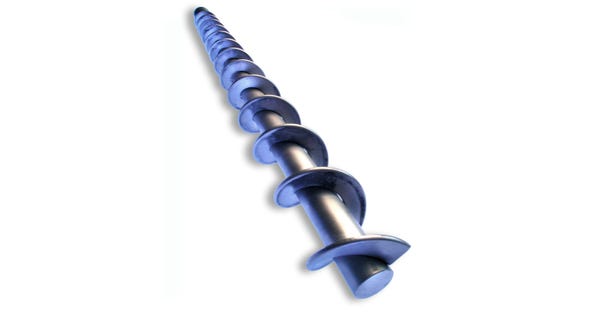
Filtration System
Another place we need to look is with the filtration system of the feeder. If the feeder has a blinded-up dust sock that is not allowing the air inside of the feeder to displace once the new material comes in during a refill, the inside of the feeder can become pressurized and flush the material out. Materials will always take the path of least resistance so if one exit is plugged (dust sock) the material will find its way out of the next easiest path with the discharge point of the feeder.
Downstream
Finally, what is downstream of the feeder? Are we feeding into a pressurized or vacuum type system below the feeder? If we are feeding into a vacuum system, the vacuum can be enough to where it is pulling the material out of the feeder before the feeder has a chance to weigh it. If this is the case, then we may need to investigate isolating the feeder from the downstream vacuum with a vented rotary airlock or a smaller screw conveyor.
Conclusion
Hopefully, these scenarios have given you some things to consider looking at if you are experiencing a flushing or flooding feeder. Feel free to give an applications engineer a call to help troubleshoot your system or, better yet, make a small investment to have a technician come out to troubleshoot your system. It is a small price to pay upfront for the loss of revenue from down time and product waste.
Todd D. Messmer is the weighing and feeding product manager for Schenck Process in the US. He has been with the company for more than 20 years in applications engineering and product management. For more information, call 262-472-6429 or visit www.schenckprocess.com.
You May Also Like

